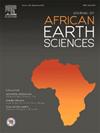Oil–oil and oil–source correlations in the Abadan Plain, SW Iran: Updated insights into middle Jurassic – Lower Cretaceous petroleum systems through biomarker analysis and chemometrics
IF 2.2
4区 地球科学
Q2 GEOSCIENCES, MULTIDISCIPLINARY
引用次数: 0
Abstract
This study investigates the organic characterization of three source rocks in the Abadan Plain (namely, Lower Cretaceous–Albian Kazhdumi, Lower Cretaceous–Neocomian Garau, and Middle Jurassic Sargelu formations), located in the western Zagros fold–and–thrust belt, southwest of Iran. A total of 82 source rock samples (33 from the Kazhdumi, 38 from the Garau, and 11 from the Sargelu) were analyzed using Rock–Eval pyrolysis and organic petrography to evaluate organic matter quantity, quality, and thermal maturity. The Kazhdumi source rock predominantly contains immature type II/III kerogens with macerals such as vitrinite, amorphinite, inertinite, alginite, cutinite, and solid bitumen. The Garau source rock primarily consists of moderately mature marine type II kerogen, with macerals including alginite, cutinite, and solid bitumen. The Sargelu source rock exhibits highly mature type II–S kerogen, dominated by late-oil solid bitumen and pyrobitumen macerals. Molecular analysis was performed on 26 source rock extracts and 58 crude oils from various reservoirs across the Abadan Plain. Using isoprenoids, triterpanes, steranes, and aromatic biomarkers, a thermal sequence of Kazhdumi < Garau < Sargelu or Kazhdumi < Sargelu < Garau was identified in source rock extracts, while crude oils followed Sarvak < Azadegan Sandstone < Gadvan < Fahliyan. Principal component and hierarchical cluster analyses revealed that crude oils align with the thermal maturity of their source rocks. Strong correlations were observed between the crude oils and Garau and Sargelu source rocks, distinctly separating from the Kazhdumi source rock, emphasizing their dominant role in the Abadan Plain's petroleum systems.
求助全文
约1分钟内获得全文
求助全文
来源期刊

Journal of African Earth Sciences
地学-地球科学综合
CiteScore
4.70
自引率
4.30%
发文量
240
审稿时长
12 months
期刊介绍:
The Journal of African Earth Sciences sees itself as the prime geological journal for all aspects of the Earth Sciences about the African plate. Papers dealing with peripheral areas are welcome if they demonstrate a tight link with Africa.
The Journal publishes high quality, peer-reviewed scientific papers. It is devoted primarily to research papers but short communications relating to new developments of broad interest, reviews and book reviews will also be considered. Papers must have international appeal and should present work of more regional than local significance and dealing with well identified and justified scientific questions. Specialised technical papers, analytical or exploration reports must be avoided. Papers on applied geology should preferably be linked to such core disciplines and must be addressed to a more general geoscientific audience.
 求助内容:
求助内容: 应助结果提醒方式:
应助结果提醒方式:


